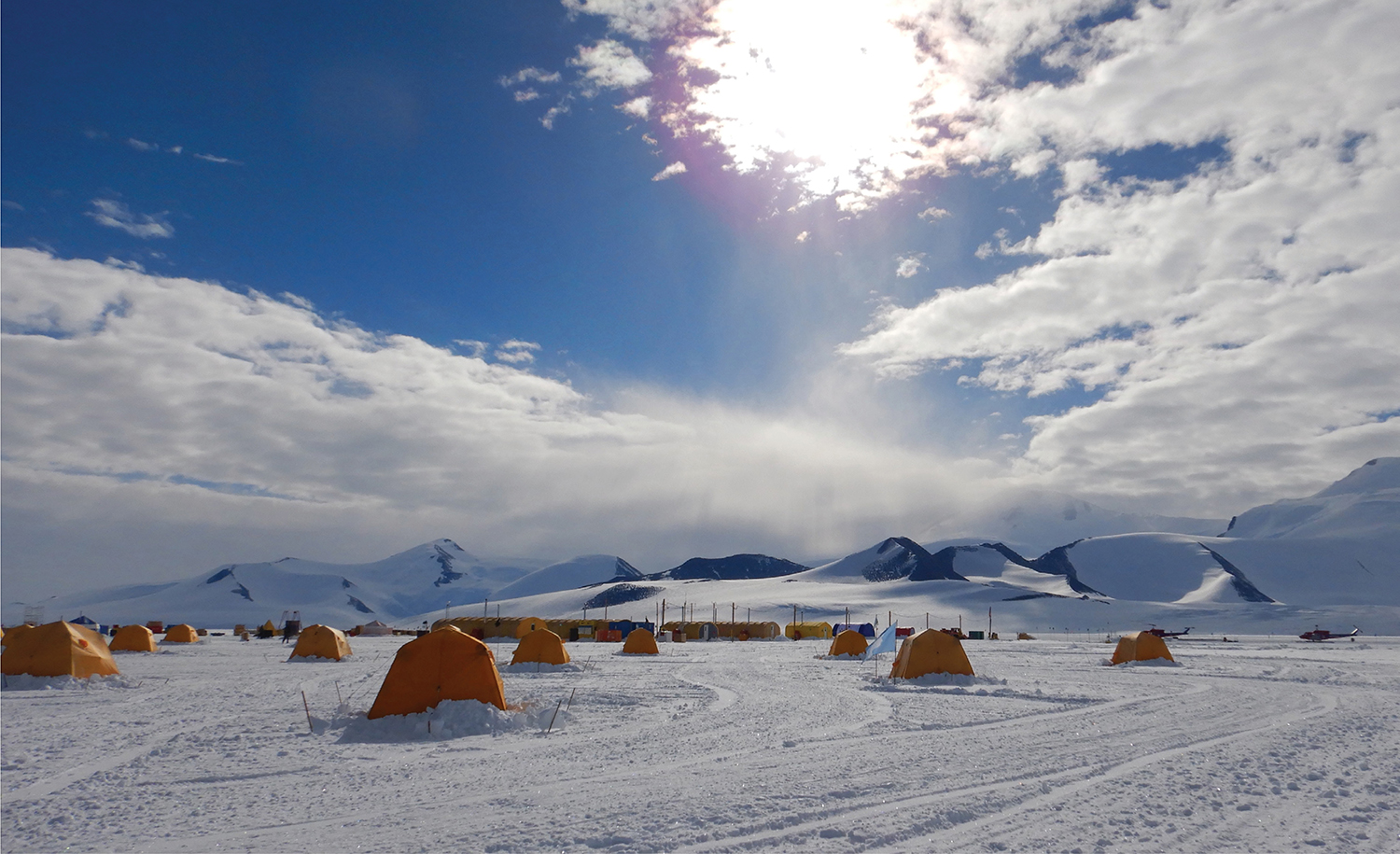 In the remote mountains far beyond Antarctica’s McMurdo Station, Vanderbilt geologist Dan Morgan and undergraduate Andrew Grant lived in tents for more than a month while they hunted in the glow of an ever-present sun for the oldest ice ever found. It was winter 2018 back in Nashville, but 10,000 miles away in Antarctica it was austral summer, the season of 24/7 sun in the Southern Hemisphere. A small team that included Morgan, senior lecturer in Earth and environmental sciences, and Grant had traveled to the frozen continent to study ice and how it has changed over millions of years. “I’m really interested in climate change and how it actually impacts the ice,” says Morgan. “We examine the record that ice leaves on the landscape to understand how the ice has changed over time. The Antarctic Ice Sheet plays a really important role in how Earth’s systems function, so what happens there impacts the whole planet.” Morgan hopes to return to Antarctica this November. Photo by Andrew Grant.
In the remote mountains far beyond Antarctica’s McMurdo Station, Vanderbilt geologist Dan Morgan and undergraduate Andrew Grant lived in tents for more than a month while they hunted in the glow of an ever-present sun for the oldest ice ever found. It was winter 2018 back in Nashville, but 10,000 miles away in Antarctica it was austral summer, the season of 24/7 sun in the Southern Hemisphere. A small team that included Morgan, senior lecturer in Earth and environmental sciences, and Grant had traveled to the frozen continent to study ice and how it has changed over millions of years. “I’m really interested in climate change and how it actually impacts the ice,” says Morgan. “We examine the record that ice leaves on the landscape to understand how the ice has changed over time. The Antarctic Ice Sheet plays a really important role in how Earth’s systems function, so what happens there impacts the whole planet.” Morgan hopes to return to Antarctica this November. Photo by Andrew Grant.